Sara Sharif, 10, had spinal fracture injury comparable to being ‘kicked by a horse’, murder trial hears
A radiologist who examined the body of murdered schoolgirl Sara Sharif has claimed her injuries were comparable to being ‘kicked by a horse’.
The 10-year-old girl suffered at least 25 different broken bones and 71 external injuries inflicted on her as she was tortured in the days before she died, the court heard.
Discussing the 10 vertebral fractures he discovered in the child, Professor Owen Arthurs, pediatric radiologist at Great Ormond Street Hospital, said: ‘Vertebral fractures (in children) are very rare, even in specialist trauma centers and are usually caused by high impact, high trauma -incidents, such as traffic accidents, falling from height or being kicked by a horse.’
The fractures to both shoulder blades, or shoulder blades, were caused by ‘blunt trauma’.
Her father, taxi driver Urfan Sharif, 42, his partner Beinash Batool, 30, and her brother, McDonald’s worker Faisal Malik, 29, all deny murder and causing or permitting the death of a child.
The 10-year-old girl suffered at least 25 different broken bones and 71 external injuries inflicted on her. She was tortured in the days before she died, the court heard today.
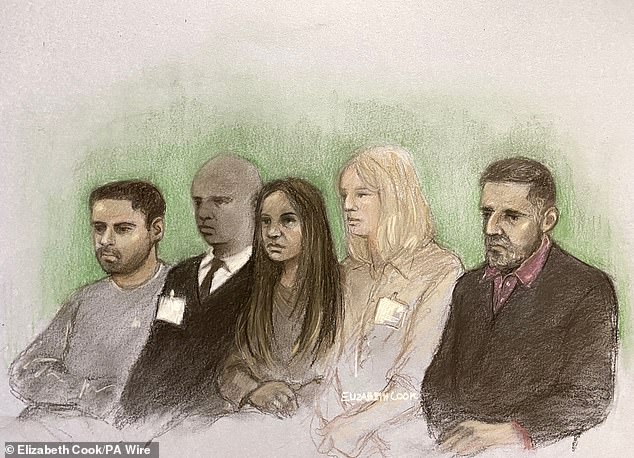
Court artist’s drawing by Elizabeth Cook of Sarah Sharif’s father Urfan Sharif (right), her uncle Faisal Malik (left), and stepmother Beinash Batool (center), sitting next to port officers at the Old Bailey in London

The family home on Hammond Road in Woking, Surrey, where the body of 10-year-old Sara Sharif was found. Sara had been strangled until a bone in her neck broke three months before she died
An autopsy revealed that Sara had suffered ‘multiple and extensive injuries’ over a ‘sustained and prolonged’ period.
She was found to have ten vertebral fractures and further fractures to her right collarbone, both shoulder blades, both arms, both hands, three separate fingers, bones near the wrist in each hand, two ribs and her hyoid bone in the neck.
Sara also had severe burns from an iron and six bite wounds.
After the murder, Sharif fled to Pakistan with Batool and Malik, leaving Sara’s body in the three-bedroom house in Woking.
They were arrested at Gatwick Airport just over a month later on September 13 last year after flying back from Dubai.
Sara had probably died on August 8, two days before Urfan called the police.
Giving evidence at The Old Bailey today, Professor Arthurs said: ‘Many fractures can occur accidentally and many fractures can occur from a single event.
‘But my view was that they were very unusual and could not be explained by a chance mechanism, nor by a single high-impact traumatic event.
“My opinion for the most likely explanation for the constellation of injuries is multiple episodes of blunt force trauma, inflicted over several weeks.”
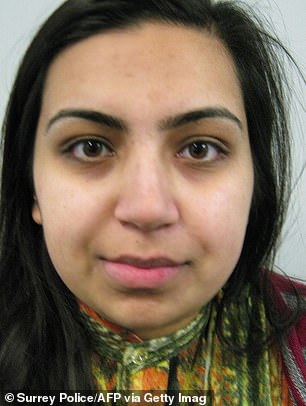
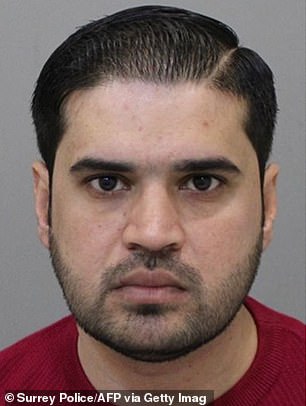
Police later charged Sharif, his wife Beinash Batool, 30, (left) and his younger brother Faisal Malik, 29, (right), all of whom lived in the house at the time of the murder.

Ten-year-old Sara Sharif (pictured) was strangled until a bone in her neck broke in the weeks before her murder, the Old Bailey has heard.
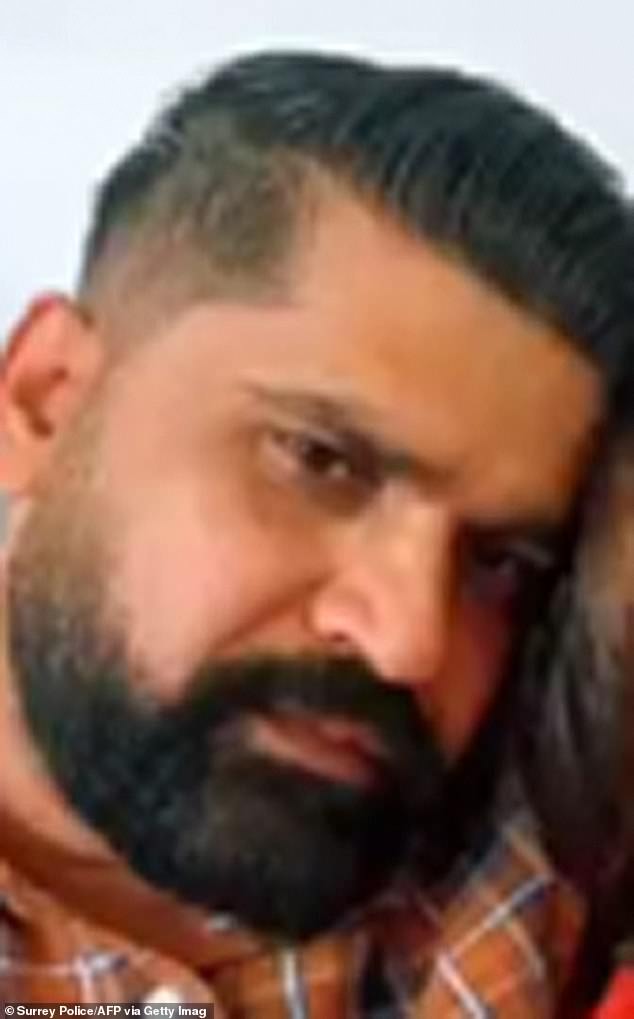
Sara’s father Urfan Sharif (pictured), 42, is on trial at the Old Bailey accused of murdering his daughter, along with Sara’s stepmother Beinash Batool, 30, and uncle Faisal Malik, 29
Professor Arthurs spoke about the rarity of some of the fractures Sara suffered, especially the fractures in both shoulder blades and the hyoid bone.
He said: ‘Scapular fractures are very rare in children, there are large muscles in them and they move too, it is quite difficult to break your scapular in a sports injury or something like that.
‘These are almost certainly caused by direct blunt trauma to the body.
‘I can’t think of an accidental way where you would break both shoulder blades at the same time.
“I have never seen a hyoid fracture in a child, even in children with a history of ligature strangulation,” he said.
‘The presence of a hyoid fracture indicates severe neck compression.
“The most likely cause here is manual strangulation.”
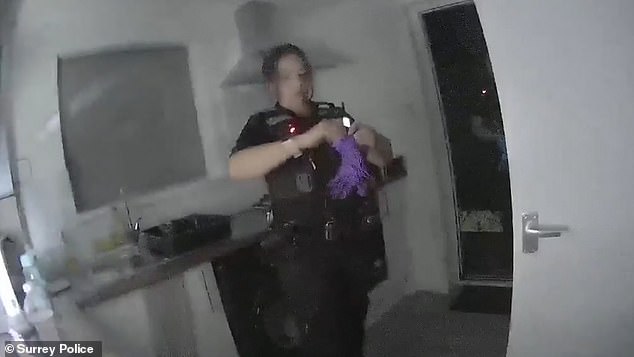
Once inside the house where Shona was found, an officer was filmed repeatedly shouting “Police, hello,” before the camera panned to a colleague putting on purple latex gloves.
Professor Anthony Freemont, an osteoarticular pathologist, told the court that Sara’s hyoid fracture occurred three months before her death and that the fractures in her left hand were caused about two weeks before her death.
Professor Arthurs confirmed a wide range of timelines regarding Sara’s fractures, including a break in her trapezium bone in the right hand that was less than ten days old.
He told the jury that the fractures to her shoulder blades were as old as six weeks.
One of her vertebrae had begun to heal after a fracture, but had fractured again.
Sara’s 10 spinal fractures were less than four weeks old, he said.
Sharif, Batool and Malik all deny murder and causing or allowing the death of a child.
The process continues.
